Gastropods
Family Epitoniidae
Click on photo to enlarge. Scale line in photo equals 1cm unless otherwise specified.
* Species which are commonly encountered on the beach.
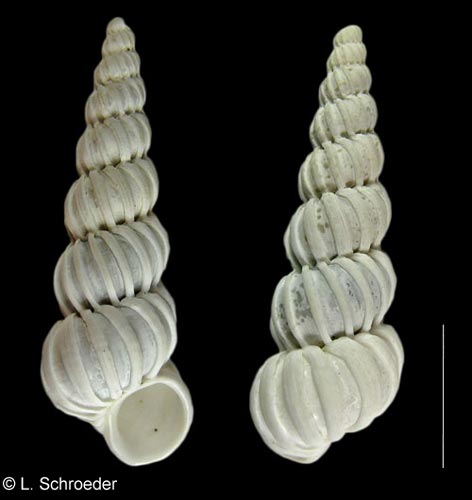 San Juan Islands, WAEpitonium indianorum (Carpenter, 1865)Money Wentletrap
San Juan Islands, WAEpitonium indianorum (Carpenter, 1865)Money Wentletrap
intertidal to 180m size to 38mm
northern Mexico to southern Alaska
This is infrequently found intertidally. It is usually found feeding on the Urticina anemones. This species has rounded whorls and a rounded aperture. It was sometimes used by native peoples as money.
(synonyms - Nitidiscala indianorum, Scalaria indianorum, Epitonium columbianum, Epitonium montereyensis, Epitonium regiomontanum)
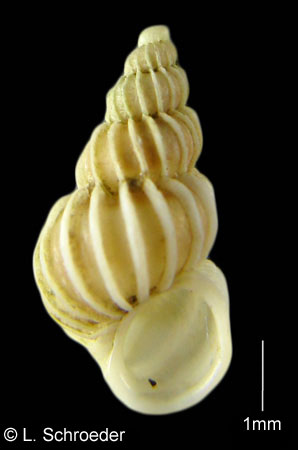
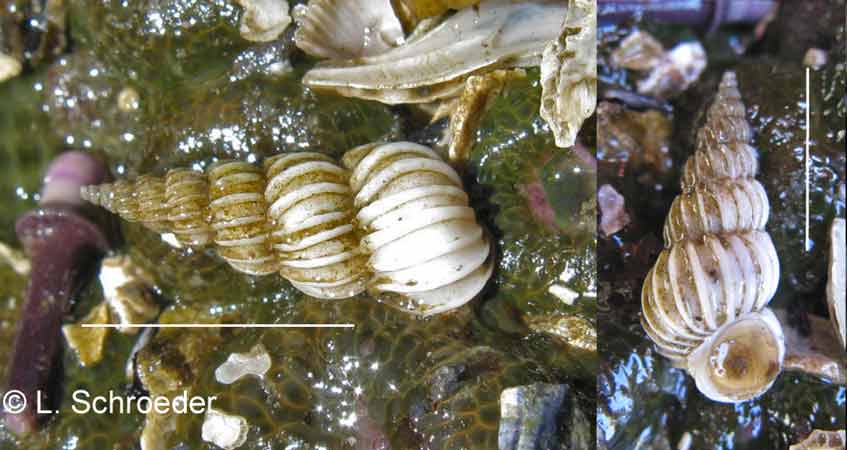
Slip Point, WA
Slip Point, WA, intertidal
Epitonium tinctum (Carpenter, 1864)Tinted Wentletrap
intertidal
to 45m northern Mexico to southern
Alaska size to 32mm
This is infrequently found intertidally, but when it is found, there may be many. It is usually seen feeding on Anthopleura
anemones. This white shell usually has a purplish-brown band just
below the suture line. It has a more stout shape than E. indianorum. The axial ribs may sometimes be pointed at the tops.
(synonyms - Nitidiscala tincta, Nitidiscala eelense, Epitonium subcornatum, Epitonium indianorum tincta)
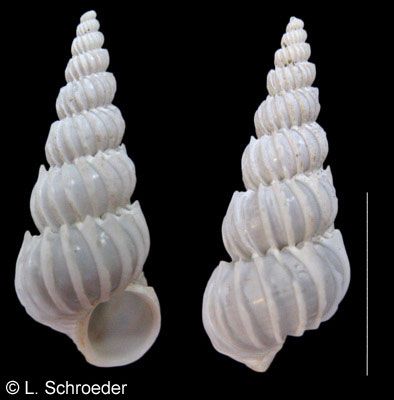 Barkley Sound, BCEpitonium sawinae (Dall, 1903)Sawin's Wentletrap
Barkley Sound, BCEpitonium sawinae (Dall, 1903)Sawin's Wentletrap
subtidal, 18-90m size to at least 20mm
California to BC
This pure white shell has axial ribs which are usually pointed at the top. The sutures are deeply impressed.
This page last revised: 5-25-2019
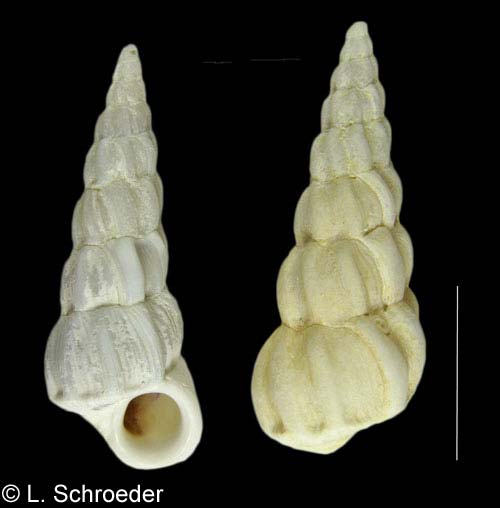
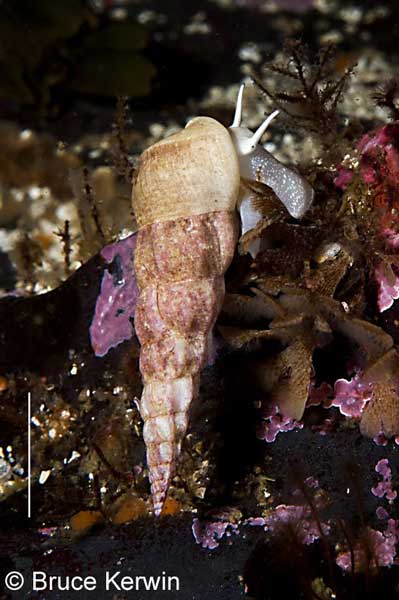
Whiskey Creek Beach, WA off Hurst Is., BC, subtidal
Opalia wroblewskyi Mörch, 1875
Boreal Wentletrap
intertidal to 90m size to 32mm
northern Mexico to northern Alaska
This
is occasionally found intertidally. It generally has a worn look
with thick axial ribs. The shell is usually grayish-white.
The animal can exude a purple dye and this can sometimes stain
parts of the shell purple. Like the others, it prefers to eat
anemones.
(synonyms - Opalia borealis, Epitonium borealis, Scalaria borealis, Opalia wroblewskii, Opalia chacei, Acirsa chacei, Opalia gouldi)





